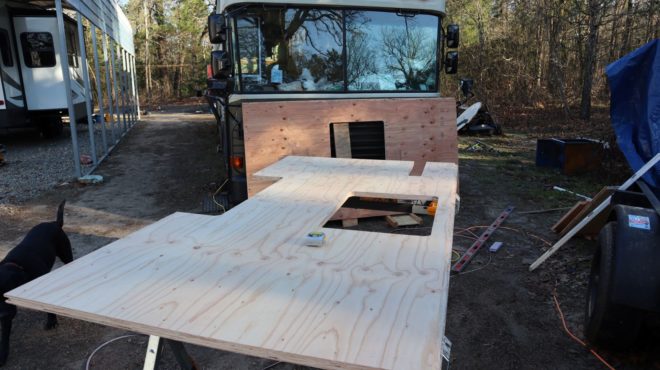It’s been a few months since I updated our blog. We’ve been working on the bus, working on our respective businesses, helping our gracious hosts with some of their projects, and basically trudging along with our To Do list.
What we have NOT been doing is traveling, which I now notice is a fundamental element to my happiness! I don’t like being stuck in one place for long. But, I recognize we are in build and re-invent mode, and that takes some time.
Calvin and I are homesteaders at heart, we love the idea of being off-grid and self-reliant, and in building our bus, we have approached it as building our home, whether it’s moving or parked somewhere. It needs to provide comfort, utility and resilience wherever we happen to be.
Like our van, the bus design has our major systems under the floor – most importantly water and power systems. This does two things: It keeps our water system inside the insulation envelope, so we don’t have to worry about frozen tanks, and it takes the wheel wells out of the equation for interior design. We have taken our time getting those elements set up and tested because, once the floor is down, getting to some of that stuff will be more than a little destructive.
WATER SYSTEM
- We have five fresh water tanks with a combined 300 gallons of capacity, the largest positioned in the center over the rear axle, and four smaller tanks placed between the axles on both sides for balanced weight distribution.
- The system is set up to function on pressurized municipal water, pressure fill of all five tanks simultaneously, or gravity fill each tank individually. We can also transfer between tanks via a Fill/Transfer manifold system. And should we have a problem with any individual tank, that tank can be drained and isolated from the rest of the system.
- The goal of our water system is to have the ability to stay remote for up to three months without having to refill. With our van’s current 100 gallon fresh tank, we can last nearly 4 weeks with minimal water conservation.
- Overkill Bonus: a multi-stage reverse osmosis filter system will also allow us to create potable water from just about any water source.
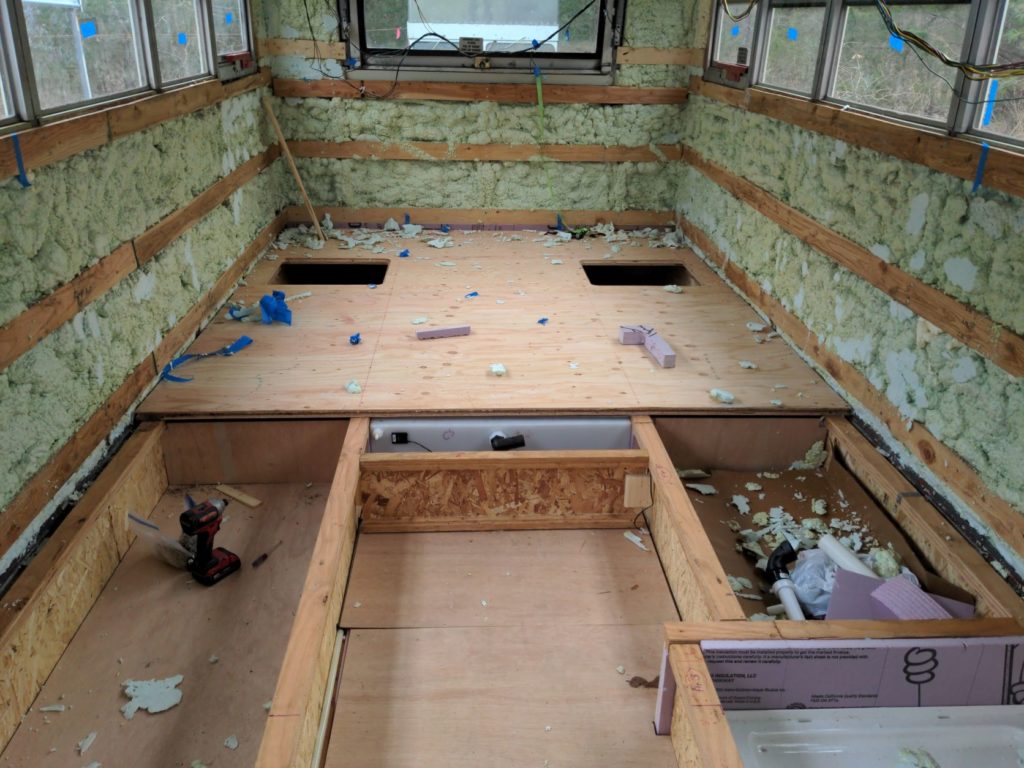

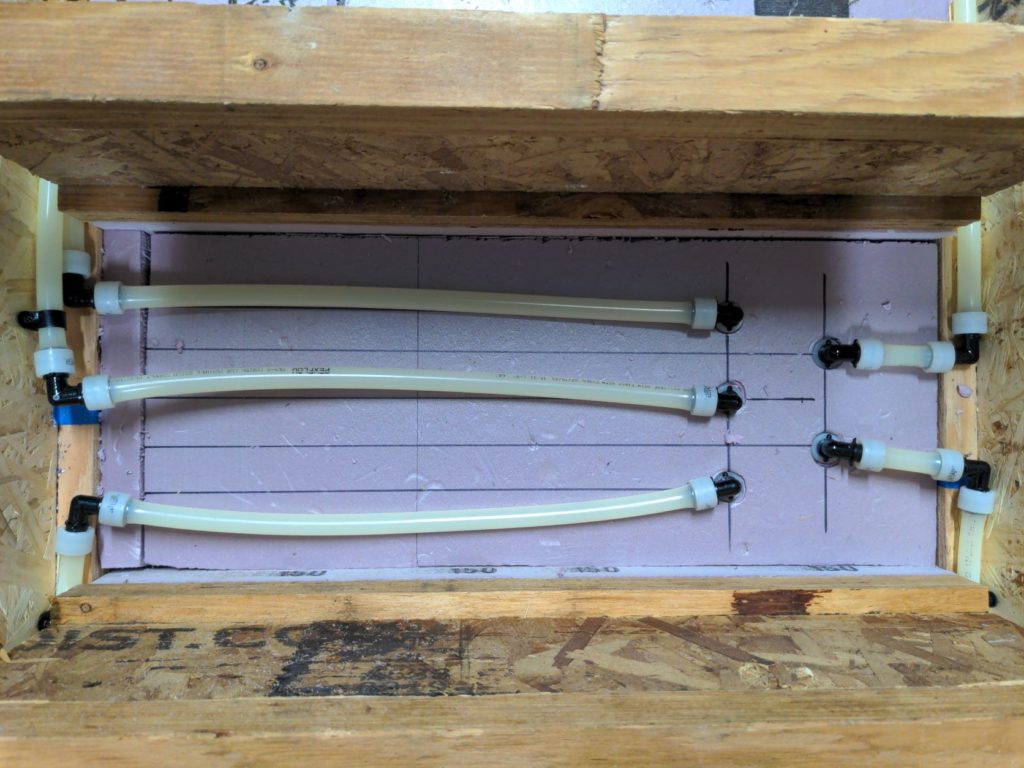
ELECTRIC SYSTEMS
- The bus will have 2000 watts of peak solar power output, with 280 amp hour 48 volt battery system.
- The 48 volt batteries will easily service our 110 appliances, step down to 12 volts for lights and other low voltage systems, and still have the capacity to run a welder if needed.
- On cloudy days, with reduced solar output, we will still be able to top off the charge on our batteries the majority of the time.
- We have space to increase our electric system capacity by adding more solar and batteries in the future if it makes sense to do so. (I’ll do a later post that details our solar/battery/inverter setup)
UNDERFLOOR STORAGE
- We love/hate our underfloor storage in the van – the storage space is great and easy to access, but our hatches are just plywood panels with finger holes and the storage bays fill with sand, pet hair, and schmutz. Every few months we have to empty and vacuum those compartments and everything stored down there has to be in dirt-proof containers or large zippie bags.
- The bus underfloor storage will be accessed through tightly closing hatches with gasket seals. There will still be a bit of schmutz infiltration, but nothing like what we deal with in the van. The hatches and storage compartments are sized so items can be organized in bins, and we are hoping to have a better organized and much cleaner system.
- We’ve also added strategically placed access hatches for water tanks and other places we may need to get to down the road – we really don’t want to have to tear up the floor ever.
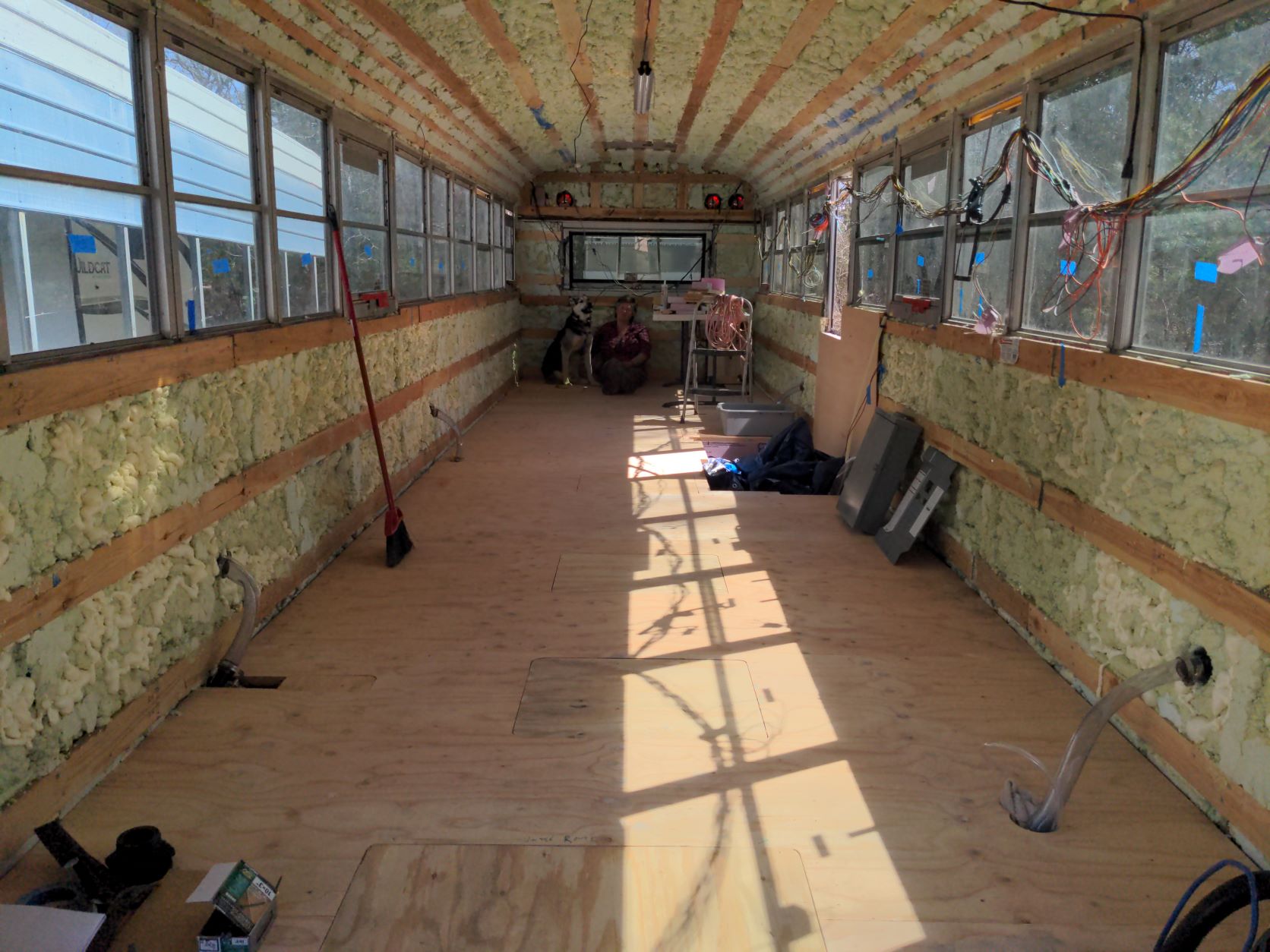
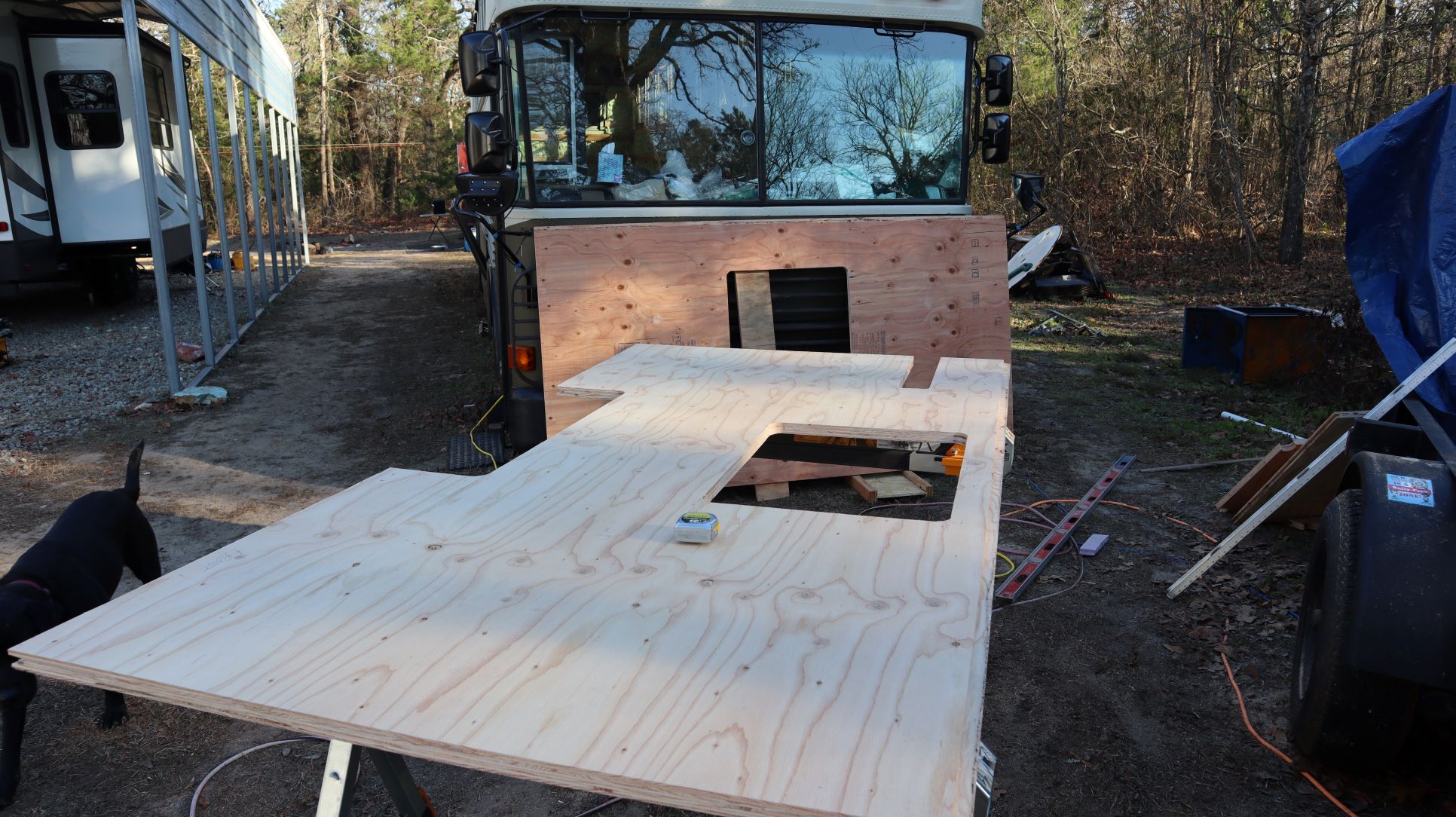
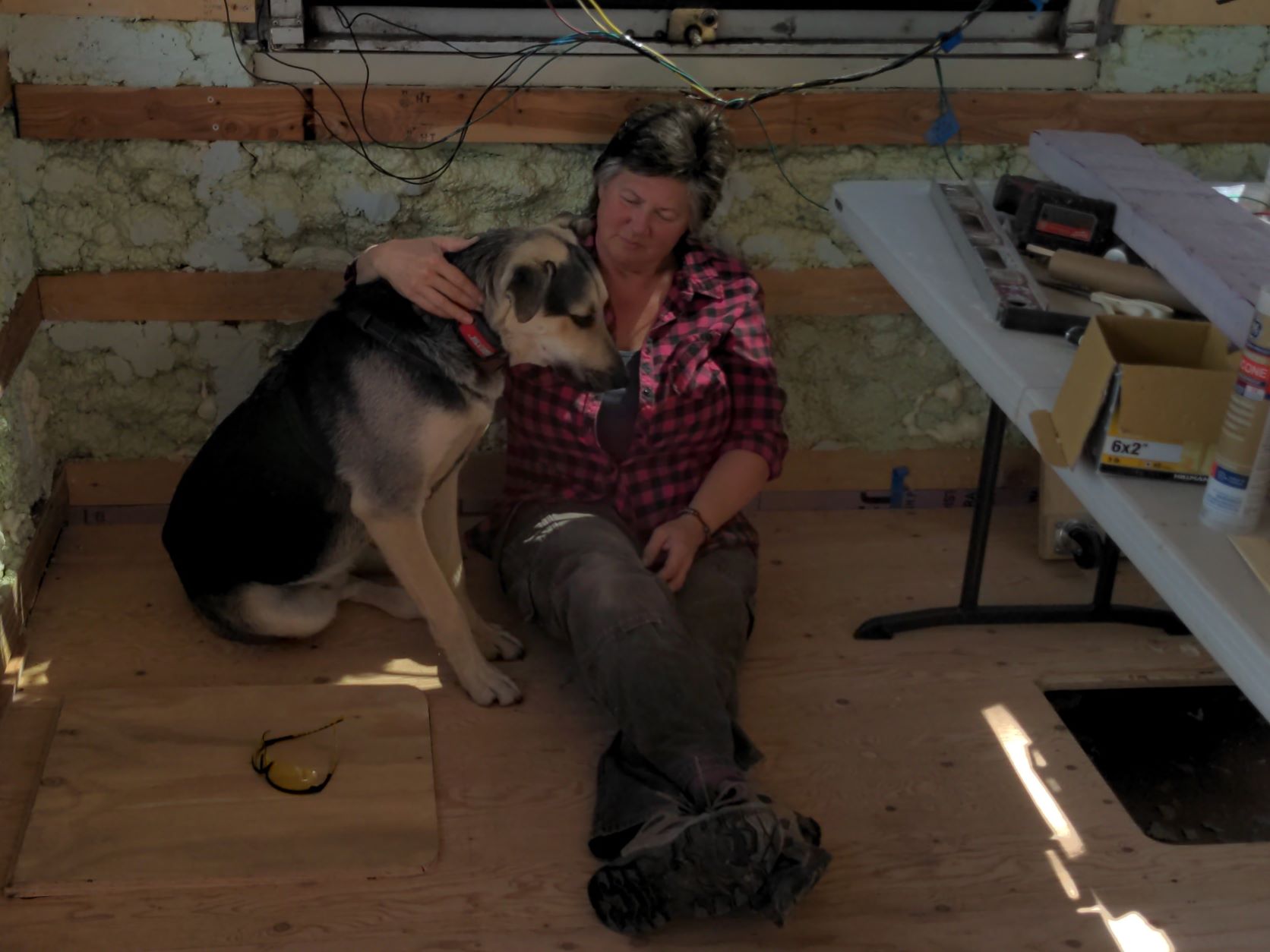
OTHER MISCELLANEOUS STUFF
- We have a small gray tank, at least in comparison to our fresh water supply, and generally speaking we can trickle out gray water almost anywhere. Because we use a composting toilet, we have no black tank, which is another factor that enables us to stay out much longer. The gray tank is mounted in the basement water control compartment directly under the shower pan.
- The shower pan for our wet bath is mounted on the original floor of the bus, so there is a step down into the bathroom. This is because of Calvin’s height and understandable desire to be able to stand under a shower stream, something his 6’5″ self hasn’t been able to do for much of his life.
- Calvin installed the MaxxFan ceiling fan in the front kitchen/living area and this thing puts out some serious wind! I think this is going to be one of my favorite things.
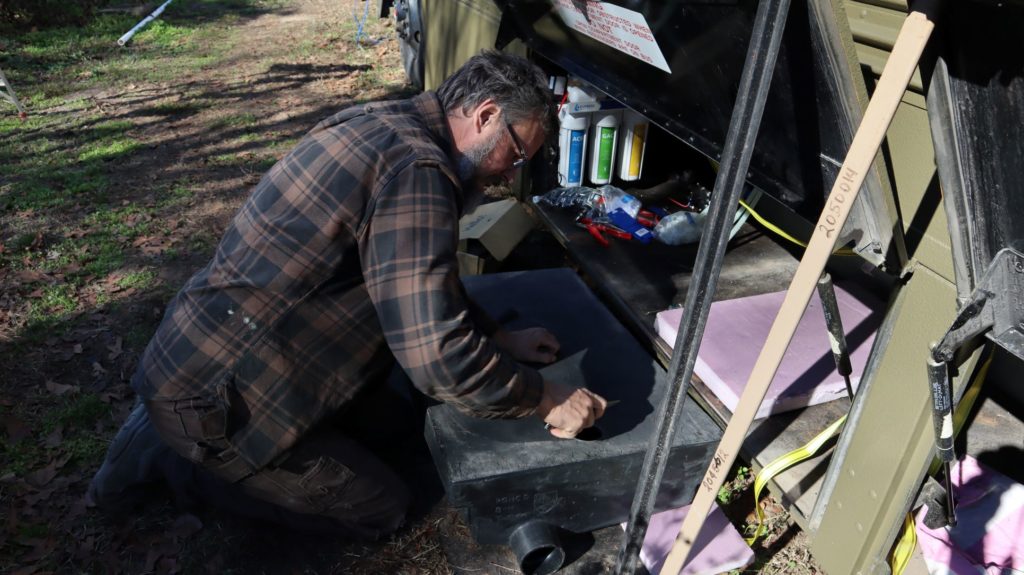


WHAT’S NEXT?
A bout of pneumonia put Yours Truly out of commission for a couple months, but now that I’m feeling more energetic and not coughing near as much, we’ll begin to work on the interior. The spray foam insulation has been trimmed, the rear wall templated so we can get that panel and the mini-split installed soon – which will be much appreciated as we head toward a Texas summer. Hopefully, installing ceiling panels, and building cabinets and interior structures will feel like warp speed compared to our pace thus far. I can’t wait.
